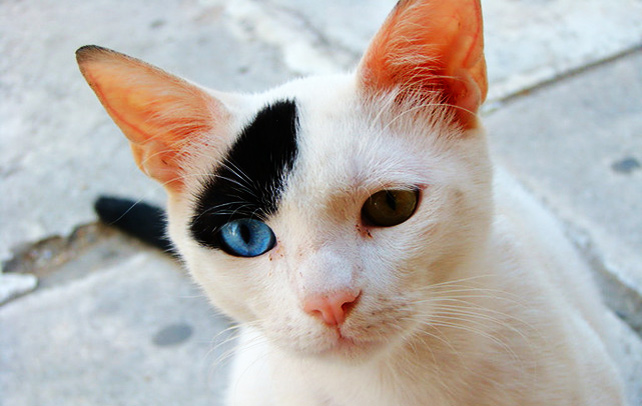Cool Facts About Cats

Cats are surprisingly human! Hard to believe? Well, then you have to check out your feline friend carefully to know what makes them so akin to humans. Yes, they love to laze around. However, the similarity doesn’t end there. Cats have almost similar circulatory and digestive system like we humans, they urinate and defecate like us, and even their skeletal system somewhat bears a close resemblance to human beings. That is not to say that cats and humans share the same pedigree. No way! Whether your feline mate can be completely domesticated is disputable. However, humans have bred cats for the past 2,000 years resulting in varied cat breeds. This also resulted in domestic breeds, which were the natives of a specific geographic region. Careful breeding over several generations have led to seventy different domestic cat breeds, though only forty of these domestic breeds have international recognition. Branded as shorthaired and longhaired, they are found in a variety of breeds that are specific to a nation or state. This is apparent in the combination colours, coat pattern, shape of head, and length of hair, folding of ears and bobbed tails or tailless cats. Irrespective of the shapes, colours and patterns, they continue to be the favourite pet to a human household!
Fast Facts
Kingdom: Animalia
Phylum: Chordata
Class: Mammalia
Order: Carnivora
Family: Felidae
Genus: Felis
Species: F. Catus
Scientific Name: Felis Catus
Diet: carnivores
Weight: 2.5 and 11.3 kg (5.5–25 pounds, varies depending upon breeds)
Lifespan: 15 to 20 years
Habitat: Around the world
Sexual Maturity: 5 to 7 months (males), 4 to 10 months (females)
Gestation Period: 63 to 65 days
Number of Offspring: 3 to 5
Cool Facts About Cats
- Cats are born with blue eyes which changes when it reaches 12 weeks of age approximately.
- Sometimes, you may wonder why your cat cannot see some eatables, which you throw him on the floor. This is because it cannot see straight under its own nose.
- It is said that cats can jump 5 to 7 times higher than their tail.
- Cats make use of its whiskers to inform whether the space they consider is sufficient for them.
- Cats have 30 permanent teeth and 30 vertebrae compared to adult humans who have 32 permanent teeth and 25 vertebrae simultaneously.
- Cats have 230 bones in their bodies, which is 24 more than we humans.
- Cats have a body temperature between 101°F and 102.2°F
- The cats are some of the smartest animals and can understand the moods and feelings of a human being.
- An average cat sleeps 12-14 hours a day. They react immediately to any stimulation. They can also be taught how to use a toilet.
- Cat urine will shine if a black light is shined on it. This is a good method to detect cat urine at home.
- As in the case of fingerprints on humans, the nose pad of cats is stiff in outline and is unique.
- Unlike humans, cats do not need to wink their eyes on a habitual basis to keep their eyes lubricated.
- Pregnancy in cats lasts up to 58 to 65 days.
- Cats cannot see in total darkness, but have an outstanding night vision.
- Cat’s rear eye has a light reflecting layer called ‘tapetum lucidum’, which causes the eyes of the cats to shine at night. This reflecting layer sucks up light six times more efficiently than human beings do. This enables the cat to have a better view than humans at night.
- Cats are the animals who step with both legs while they walk or run. The other animals, which do the same are giraffe, camel and manned wolf.
- The tails of wild cats never go higher than their back portion.
- Of the 36 species of cats, tiger is the largest, weighing up to 300 kilograms.
- Cheetah, the fastest land animal is the only cat, which cannot withdraw its claws.
- Cats cannot taste sweets.
- Cats have AB blood groups like human beings.
- As per studies, if a cat falls from the seventh floor of a building, it has lesser chances of surviving than a cat, which falls from the twentieth floor of the building. It takes about eight floors for the cat to realise what is happening, relax and correct itself.
- Similar to birds, cats have a homing ability, which makes use of its biological clock, that is, the angle of the sun and earth’s magnetic field. A cat, which is taken far from its home, can return to it. However, if a cat’s owner moves far from its home, the cat cannot find them.









